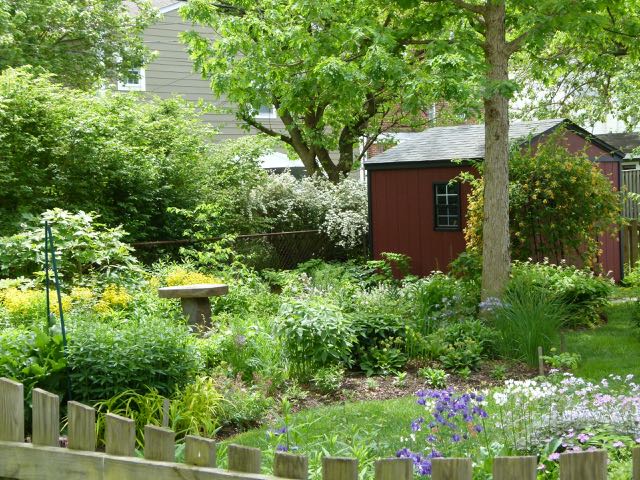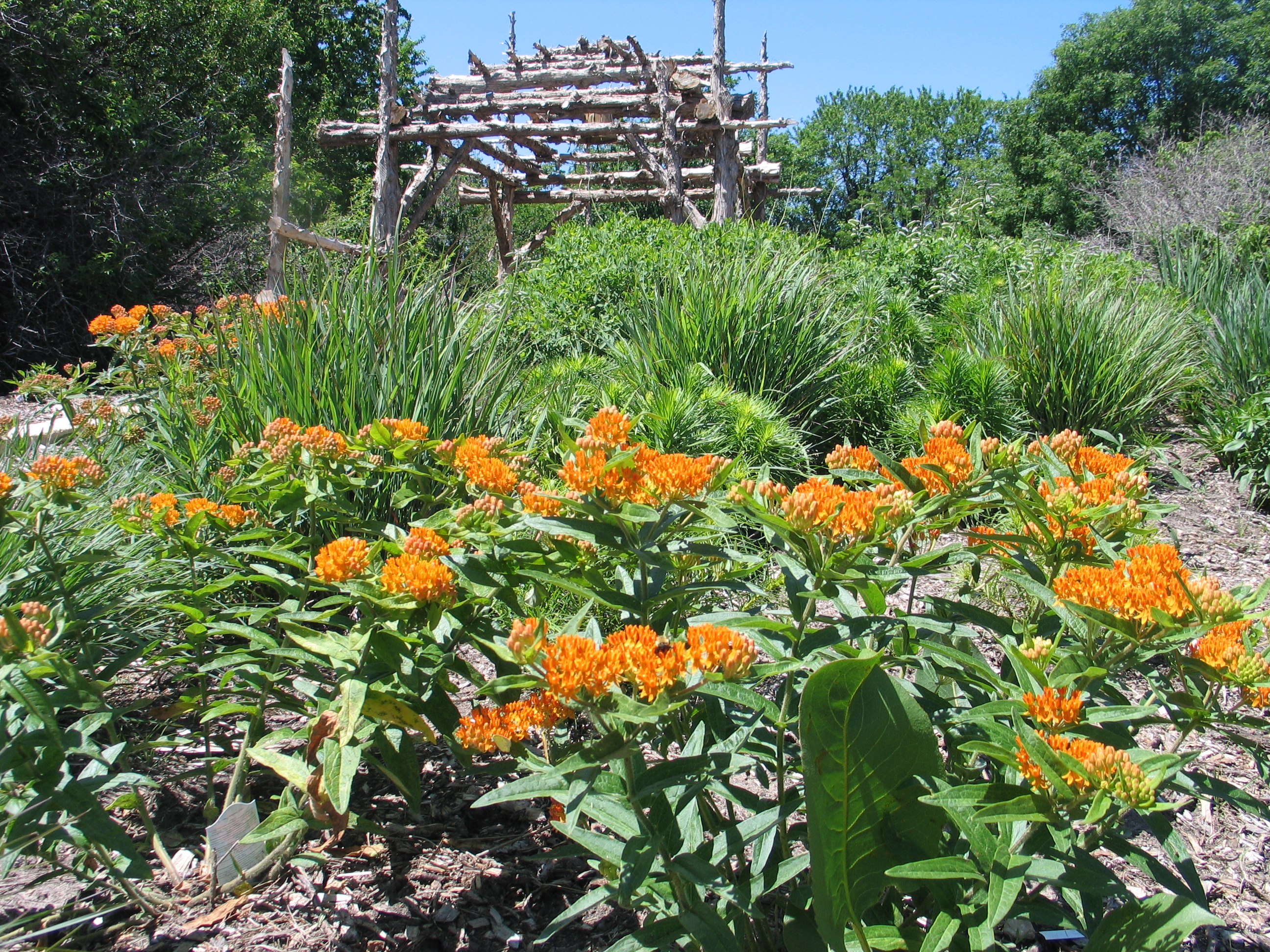Native Plant Gardening:
Are you ready to embark on a gardening adventure? Native plant gardening is not just about growing beautiful flowers and plants, it’s about creating a thriving ecosystem in your own backyard.
Imagine stepping outside and being greeted by vibrant colors, mesmerizing scents, and the soothing sounds of nature. With native plant gardening, you can transform your outdoor space into a haven for birds, butterflies, and other fascinating creatures.
In this guide, we will explore the wonders of native plant gardening and learn how to design a garden that not only brings joy to your senses but also helps support the local ecosystem. So, grab your gardening gloves and let’s dive into the world of native plant gardening!

Native Plant Gardening: Embracing the Beauty and Benefits of Indigenous Flora
Native plants are the backbone of any thriving ecosystem. Incorporating them into your garden not only adds beauty but also provides numerous environmental benefits. Whether you’re a seasoned gardener or a novice, native plant gardening is an enjoyable and sustainable way to create a vibrant and resilient landscape. In this article, we’ll delve into the world of native plant gardening, exploring its importance, benefits, and practical tips to get you started on your own native plant paradise.
The Importance of Native Plants
Native plants play a vital role in supporting local biodiversity. They have co-evolved with local insects, birds, and other wildlife over thousands of years, forming intricate relationships that support the web of life. By planting native species, you provide essential habitat and food sources for pollinators like bees and butterflies, enabling their populations to thrive. Additionally, native plants are often more resilient and better adapted to local climate conditions, requiring less maintenance and resources compared to exotic or non-native species.
By cultivating a garden with native plants, you contribute to the conservation of regional ecosystems and help combat the loss of natural habitat caused by urbanization. Native plants also have the potential to reduce soil erosion, water pollution, and the need for excessive fertilizers or pesticides. Furthermore, they can enhance the aesthetic appeal of your garden, with their unique colors, textures, and scents, creating a natural haven that seamlessly blends with the surrounding landscape.
Getting Started with Native Plant Gardening
1. Research and planning: Before diving into native plant gardening, familiarize yourself with the indigenous plant species in your area. Local nurseries, botanical gardens, and online resources can provide valuable information on plant selection and suitability for your region. Take note of factors like soil type, sunlight requirements, and water availability to ensure the right plant choices.
2. Design and layout: Consider the size and layout of your garden when planning your native plant landscape. Incorporate a variety of species to maximize biodiversity and create a visually appealing space. Group plants with similar water and light requirements and consider creating microhabitats like rock gardens or pollinator-friendly areas.
3. Soil preparation: Native plants are typically well-adapted to local soil conditions. However, it’s essential to ensure proper soil preparation. Test your soil’s pH and fertility levels and amend as necessary. Organic matter, such as compost, can be added to improve soil structure and enhance nutrient availability.
4. Maintenance and care: Native plants are generally low-maintenance, requiring minimal watering, fertilizers, or pesticides once established. However, regular weeding and occasional pruning may be necessary to maintain their health and appearance. Stay observant, monitor for pests or diseases, and take appropriate action if needed.
5. Go beyond aesthetics: Native plant gardening goes beyond beauty; it’s about creating a thriving ecosystem. Consider incorporating features like bird feeders, birdhouses, or water sources like birdbaths to attract and support local wildlife. Embrace the cycle of life by leaving fallen leaves or plant debris to decompose, providing natural mulch and habitat for beneficial organisms.
Incorporating native plants into your garden not only benefits the environment but also creates a place of tranquility and connection with nature. By choosing indigenous flora, you make a positive impact on your immediate surroundings and contribute to the larger conservation efforts in your region.
The Benefits of Native Plants in Gardening: Enhancing Ecology and Sustainability
Promoting Biodiversity and Ecosystem Health
Native plants are the cornerstone of biodiversity in any ecosystem. By including a variety of indigenous species in your garden, you create a rich and diverse habitat for insects, birds, and other wildlife. This biodiversity is essential for maintaining a healthy ecosystem and supporting the pollination of plants, the control of pests, and the overall balance of nature.
Unlike non-native plants, native species have evolved alongside local insects and animals and provide them with essential food and shelter sources. For example, certain caterpillars can only feed on specific native plants, making the presence of those plants vital for the survival of butterflies and moths. By cultivating a garden rich in native plants, you not only create a visually appealing space but also contribute to the conservation of local ecosystems.
The Role of Native Plants in Environmental Sustainability
Native plants have several environmental benefits that contribute to the overall sustainability of gardening practices. Here are some key advantages:
1. Water conservation: Native plants are adapted to local climate conditions and require less water once established. Their deep root systems help prevent soil erosion and improve water infiltration, reducing runoff and the strain on water resources.
2. Reduced pesticide use: Native plants have developed natural defense mechanisms and are better equipped to resist local pests and diseases. This reduces the need for synthetic pesticides and promotes a healthier, chemical-free environment.
3. Improved soil health: Indigenous plants have adapted to local soil conditions, helping to improve soil structure, fertility, and microbial activity. Their deep roots promote soil aeration, preventing compaction and enhancing water infiltration.
4. Climate resilience: Native plants have evolved to withstand local weather patterns, making them more resilient to climate change impacts like extreme temperatures and drought. By planting native species, you contribute to the overall resilience and adaptability of your garden.
Tips for Successful Native Plant Gardening
1. Choose the right plants for your region: Research and select native plant species that are suited to your local climate, soil conditions, and sunlight availability. Consider their growth habits and choose a mix of colors, heights, and textures for an aesthetically pleasing landscape.
2. Embrace diversity: Include a variety of native plants to maximize biodiversity and create a resilient ecosystem. Incorporate plants that bloom at different times of the year to provide a continuous food source for pollinators.
3. Plant in suitable conditions: Ensure you understand the specific needs of each native plant species, including soil type, light requirements, and water availability. Group plants with similar needs to optimize care and conserve resources.
4. Provide habitat and nesting opportunities: Create a welcoming environment for wildlife by incorporating features like bird feeders, bird baths, or native plantings with nesting opportunities. This helps support a thriving ecosystem and enhances the overall biodiversity of your garden.
5. Mulching and watering: Apply an organic mulch around native plants to help retain moisture, suppress weeds, and regulate soil temperature. Once established, native plants typically require less watering than non-native plants, but monitor their needs and provide supplemental water during dry periods.
6. Regular maintenance and observation: Like any garden, native plant landscapes require regular maintenance. Remove invasive species, control weeds, and prune as needed to maintain the health and appearance of your plants. Observe your garden regularly to identify and address any pests or diseases promptly.
By following these tips and embracing the unique beauty and benefits of native plant gardening, you can create a vibrant and ecologically sustainable landscape. Start small, experiment, and let nature guide you as you embark on this rewarding journey of embracing the wonders of indigenous flora.
Key Takeaways: Native Plant Gardening
- Native plants are plants that are naturally found in a specific area and are adapted to the local climate and soil conditions.
- Gardening with native plants promotes biodiversity and supports local ecosystems by providing food and habitats for native wildlife.
- Native plants require less maintenance and are more resistant to pests and diseases compared to non-native plant species.
- By planting native species, you can help conserve water, reduce the need for pesticides, and create a sustainable and environmentally-friendly garden.
- Research and choose native plants that are suitable for your specific region and growing conditions to ensure optimal growth and success in your garden.
Frequently Asked Questions
Welcome to our FAQ section on native plant gardening! Here, we will answer some common questions about this eco-friendly and sustainable approach to gardening. Whether you’re a seasoned gardener or just starting out, we hope to provide you with helpful insights and guidance. Let’s dig in!
1. What exactly are native plants?
Native plants are species of flora that naturally occur in a specific region without human intervention. They have adapted to the local climate, soil conditions, and wildlife, making them perfectly suited for their environment. These plants have a symbiotic relationship with local wildlife, providing them with food and shelter. They also play a crucial role in maintaining biodiversity and preserving the natural balance of ecosystems. By incorporating native plants into your garden, you can contribute to the health of your local environment.
2. Why should I consider native plant gardening?
Native plant gardening offers a myriad of benefits. Since native plants are already acclimated to the local climate, they require less water, fertilizer, and pesticides compared to non-native species. This reduces maintenance costs and contributes to water conservation efforts. Additionally, native plants attract and support native wildlife, including birds, butterflies, and bees, enhancing biodiversity in your backyard. They also reduce the risk of invasive species overtaking your garden by creating a more balanced ecosystem. By gardening with native plants, you can create a sustainable and resilient habitat while enjoying the beauty of your own backyard.
3. How do I choose the right native plants for my garden?
When selecting native plants for your garden, it’s important to consider your local climate, soil type, and available sunlight. Research the native plant species that thrive in your region and match them to the conditions in your garden. You can consult gardening resources, local garden centers, or even connect with local gardening communities to get recommendations. It’s also helpful to visit local botanical gardens or participate in garden tours to see native plants in action and gather inspiration. By understanding your specific gardening conditions and exploring the native plants that flourish in your area, you can make informed choices for a successful and beautiful native plant garden.
4. Are native plants low maintenance?
Native plants are generally low maintenance once they are established. Because they are naturally adapted to the local climate, they require less watering, fertilizing, and overall care compared to non-native species. Native plants are accustomed to the natural rainfall patterns of your region, reducing the need for extensive irrigation. They have also evolved to thrive in the local soil conditions, so they tend to be more resilient against pests and diseases. However, keep in mind that like any garden, native plant gardens still require some initial effort, such as proper soil preparation and regular monitoring. Once established, native plant gardening can be an enjoyable and rewarding experience.
5. Can I create a beautiful garden with native plants?
Absolutely! Native plant gardens can be incredibly beautiful and diverse. Native plants offer a wide range of colors, shapes, and sizes, allowing you to create a visually stunning landscape. From vibrant wildflowers to majestic trees, you can incorporate a variety of native plants to design a garden that suits your aesthetic preferences. Additionally, native plants attract pollinators like butterflies and bees, bringing life and movement to your garden. By carefully selecting and arranging native plants, you can create a vibrant and captivating garden that enhances the natural beauty of your surroundings.

“Plant Only Natives” : This Trendy New Garden Pedantry Misses the Mark
Summary
Planting native plants in your garden has many benefits. It helps support local wildlife and pollinators, reduces water usage, and requires less maintenance. Native plants are well-suited to your area’s climate and soil conditions, making them easier to grow. They also add beauty and diversity to your garden, with a variety of colors and textures. So, consider adding some native plants to your garden and enjoy the benefits they bring!
Native plant gardens are not only beautiful but also eco-friendly. They provide food and shelter for local wildlife, conserve water, and require less work. By choosing native plants, you can create a sustainable, low-maintenance garden that thrives in your area. So, go out there, find some native plants, and let your garden flourish!
